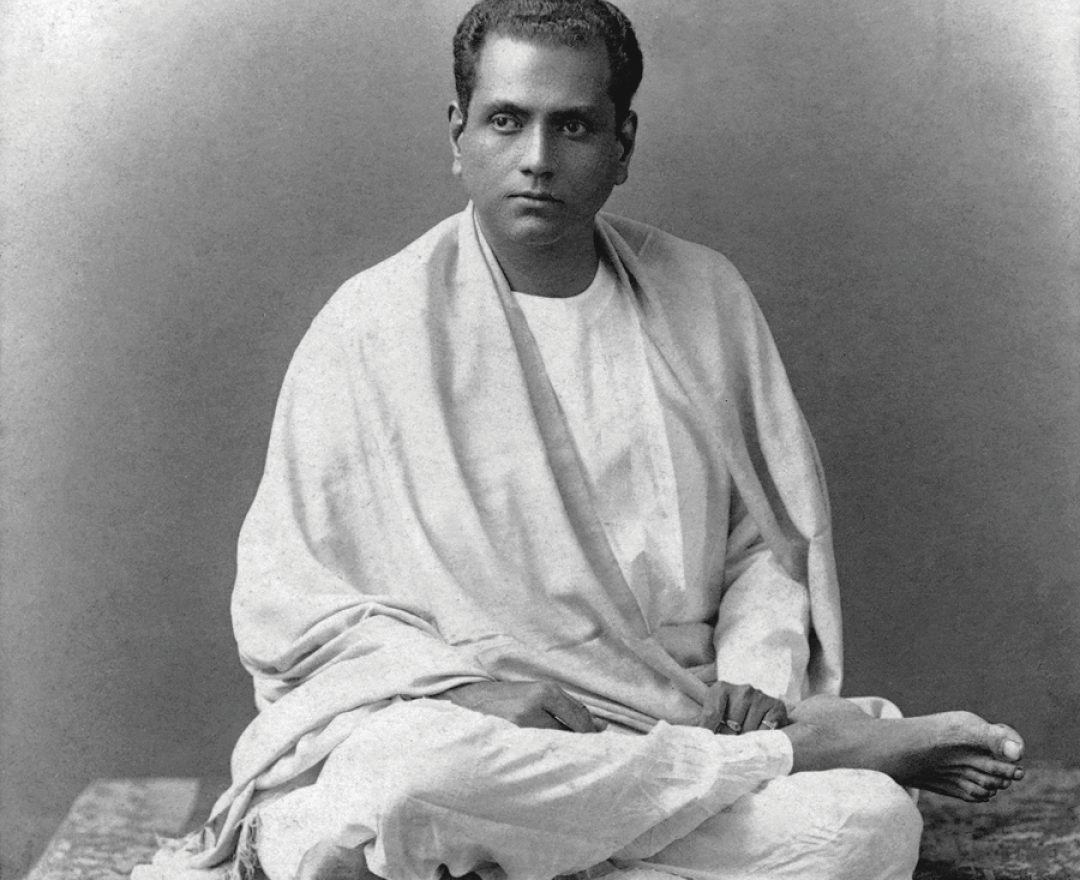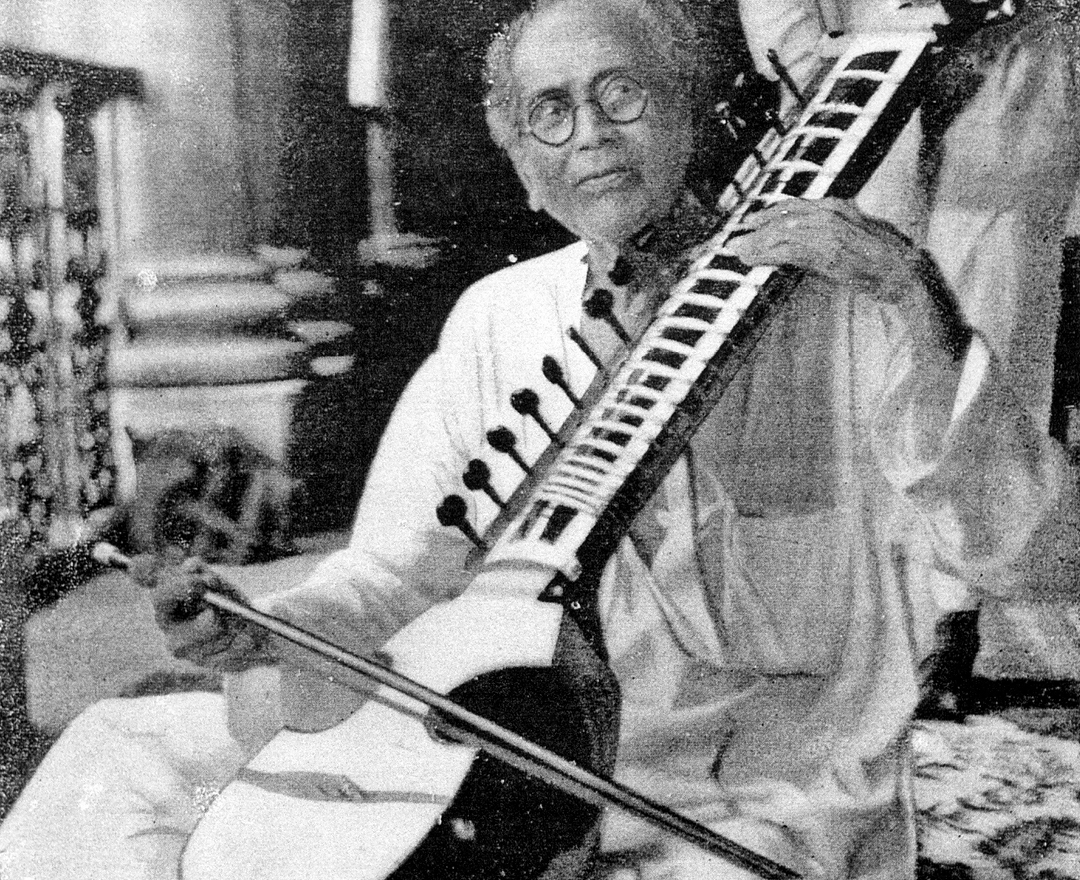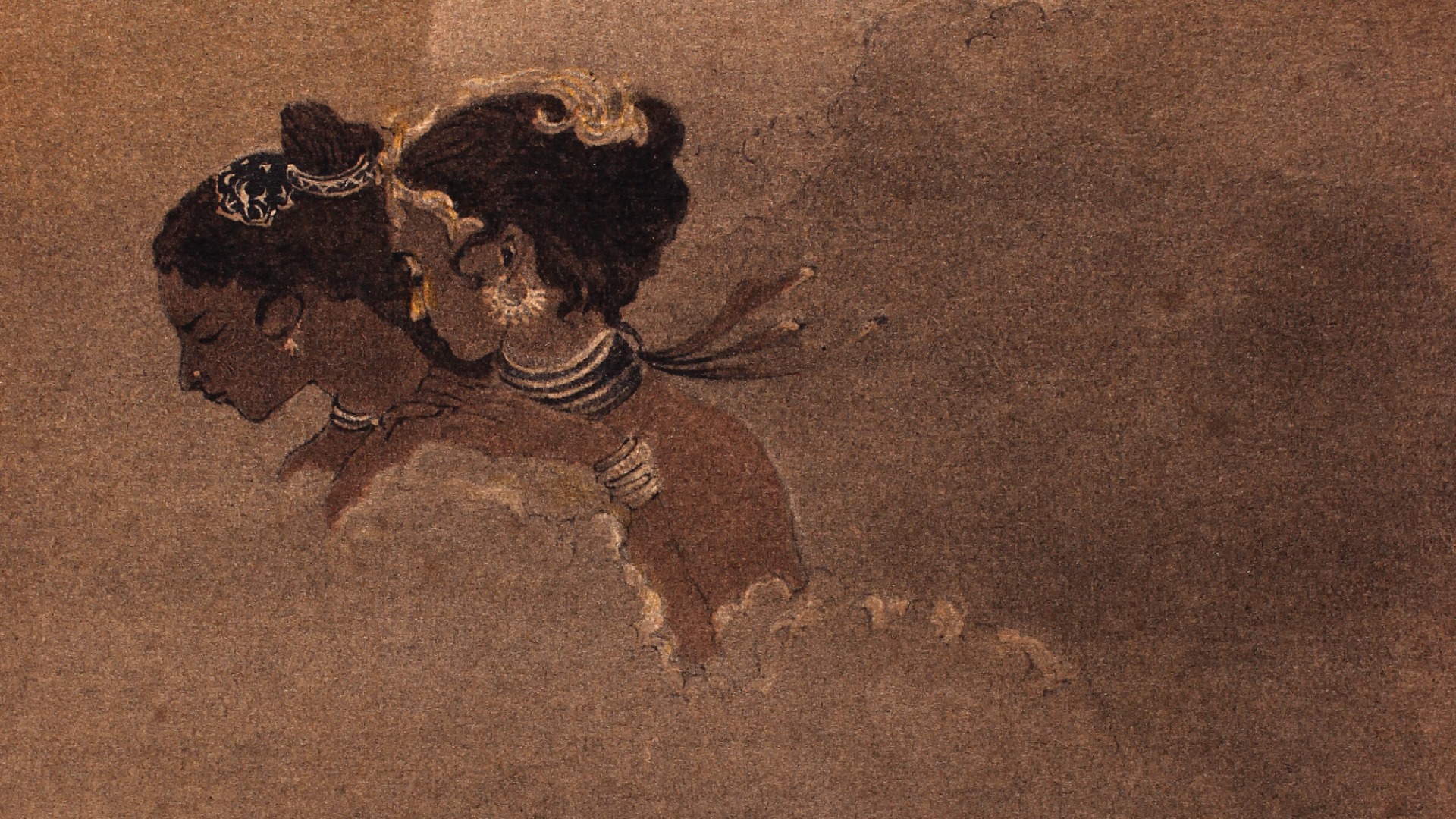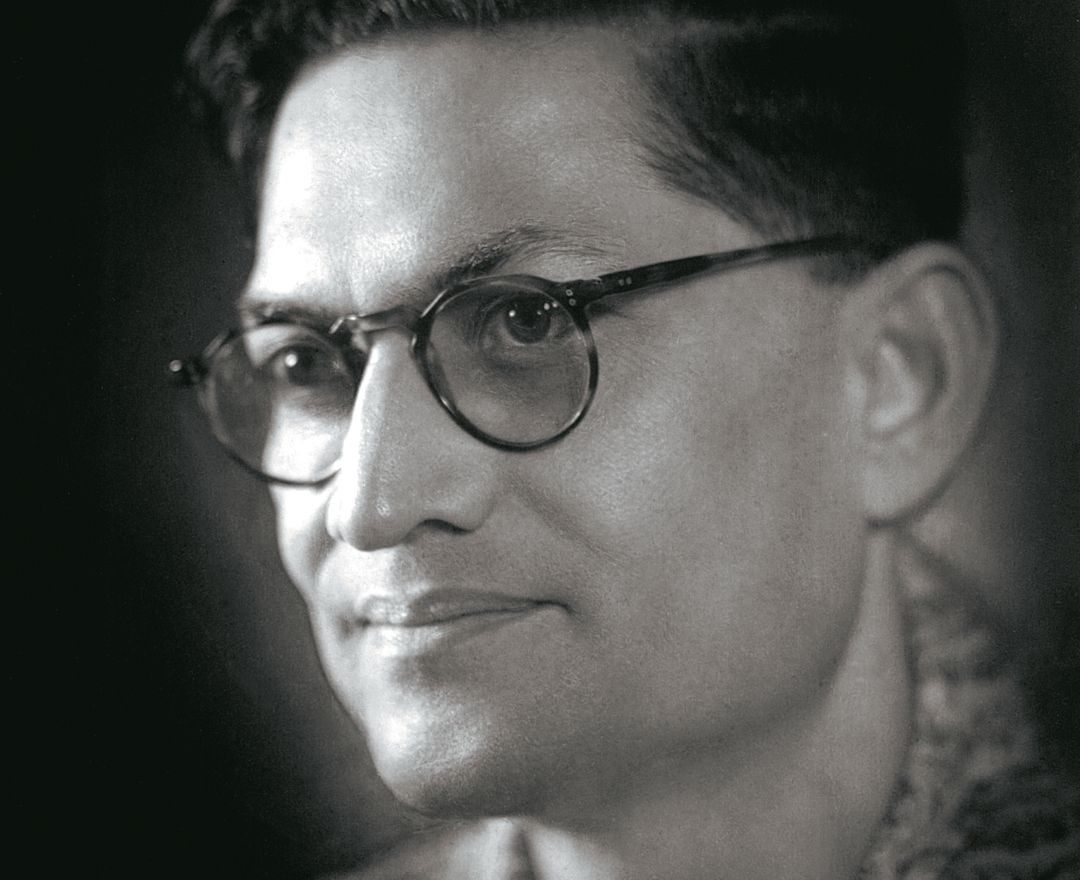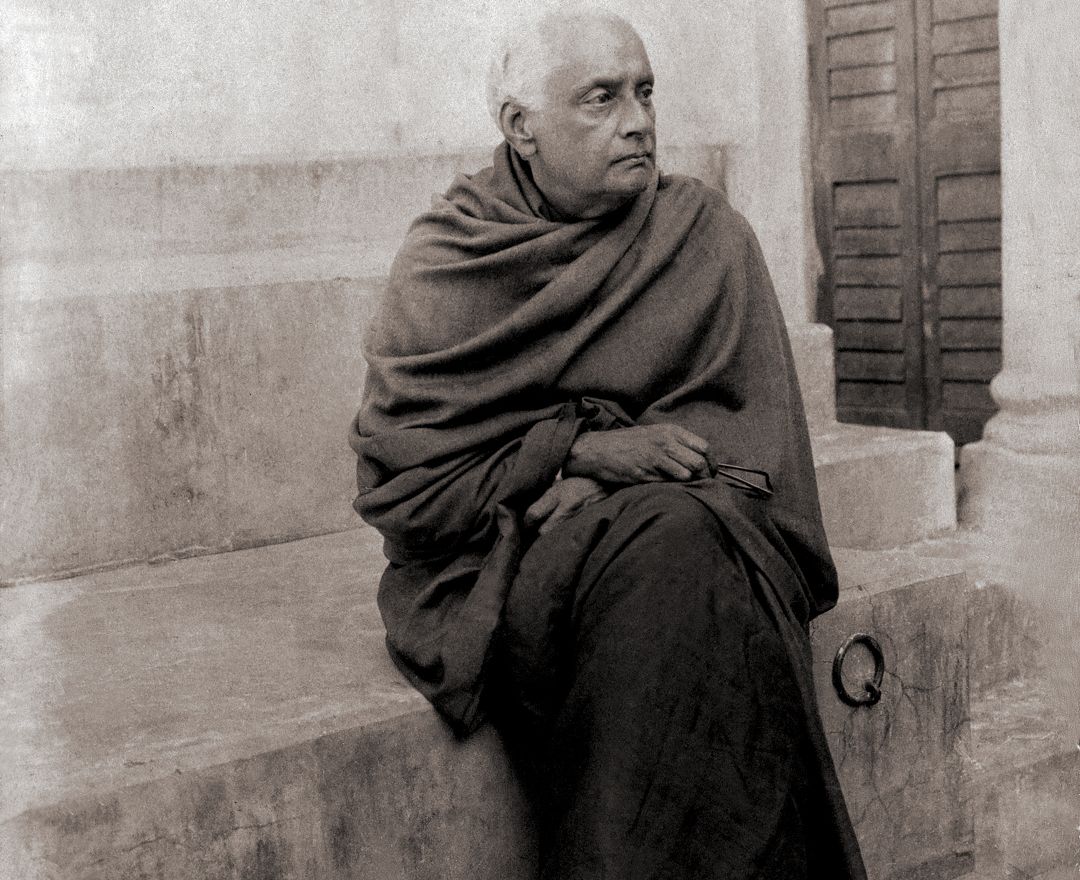1871
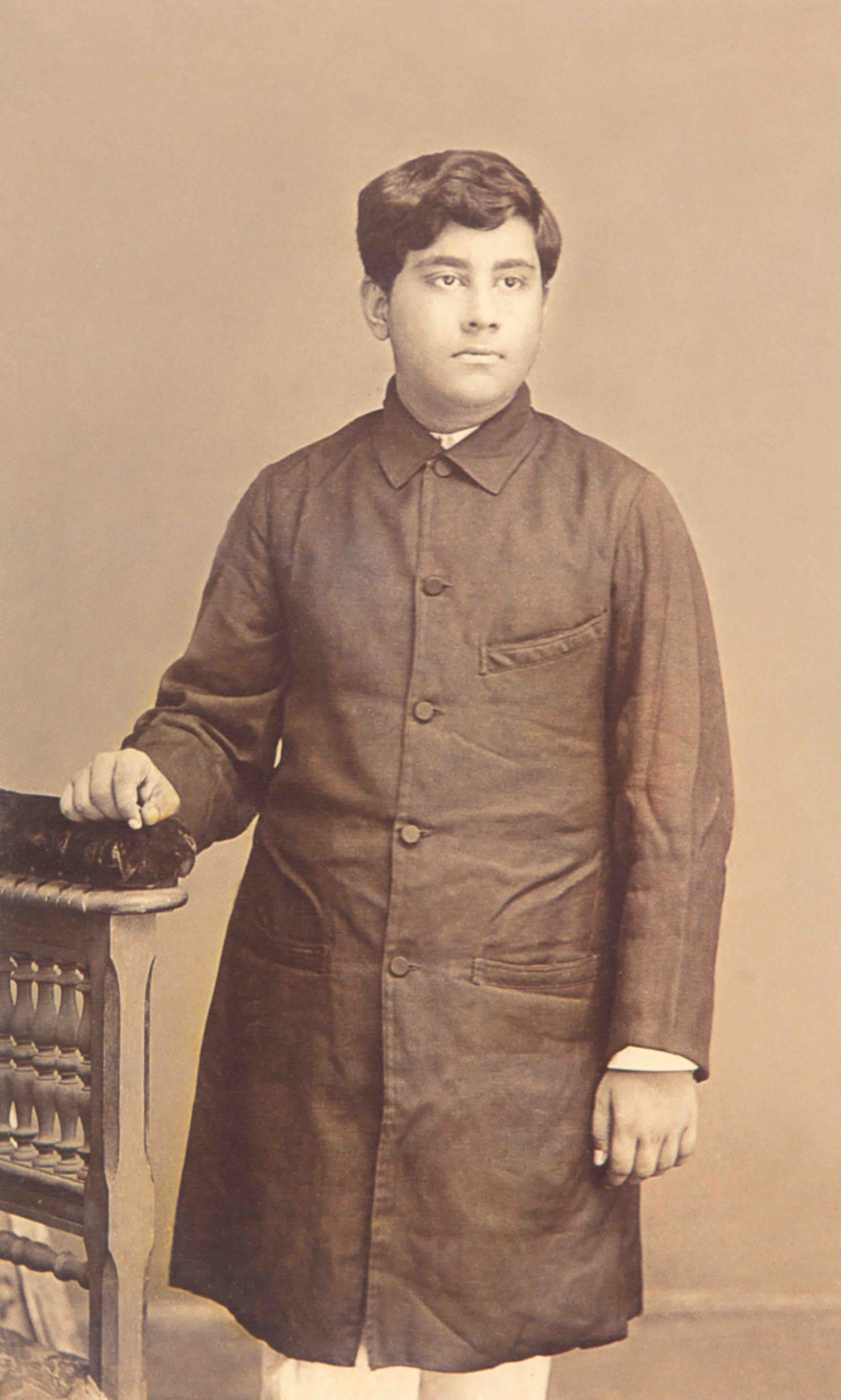
Born on August 7 in Jorasanko, Calcutta.
1876
Father Gunendranath enrols five-year-old Abanindranath at Normal School where he studies for two-three years, till he receives a flogging from his teacher and his father decides to discontinue his association with the school.
1881
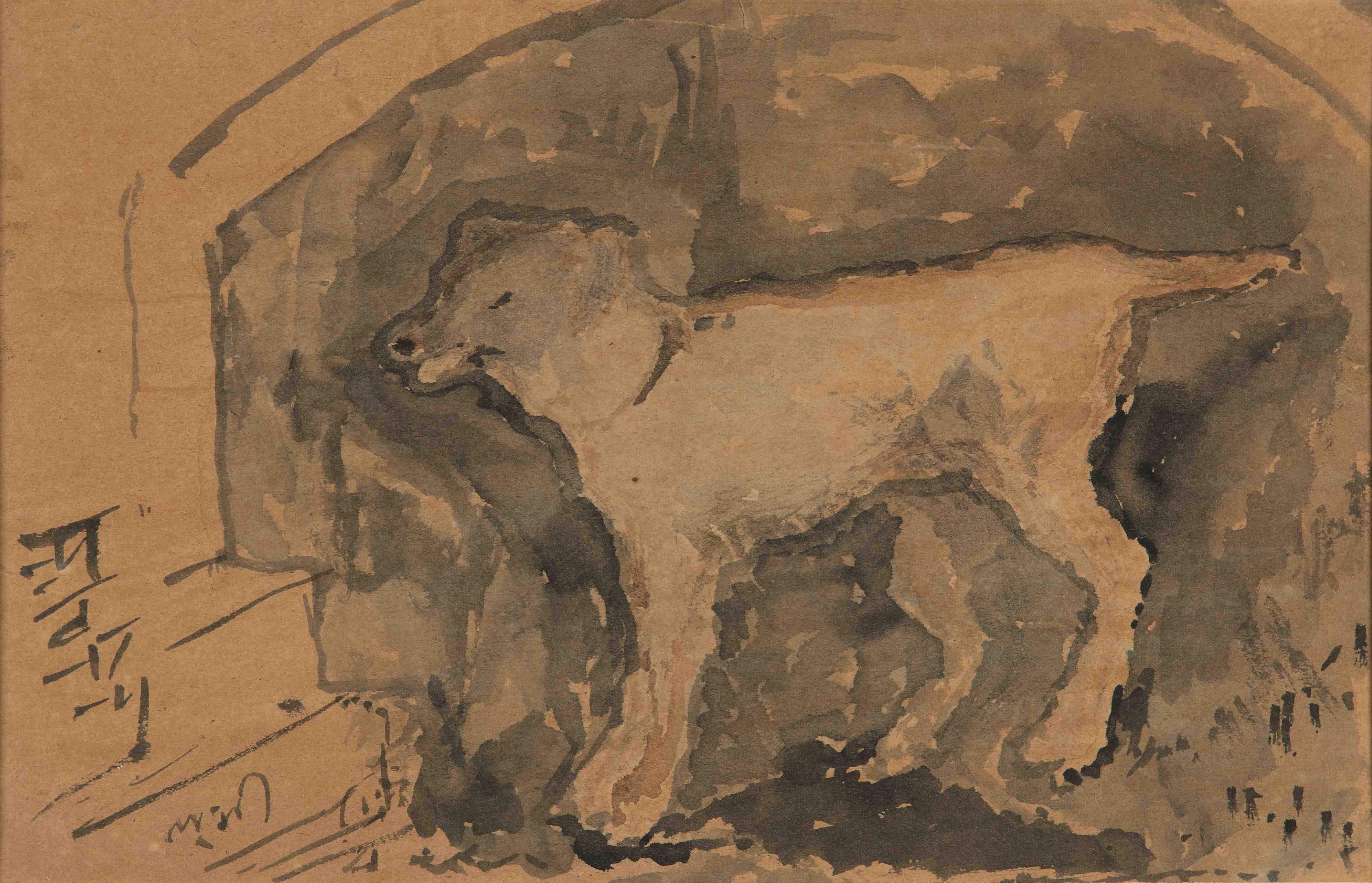
His father, a Sunday painter and a significant early influence on Abanindranath, passes away.
1881-90
Studies at Sanskrit College for nine years; develops an interest in the Indian classics, also dabbles in music. While he receives no formal art training during this period, he does take lessons from a classmate, Anukul Chatterjee, learning and practising pencil drawing.
1889
Marries Suhasini Devi.
1890
Attends Calcutta School of Art
1891
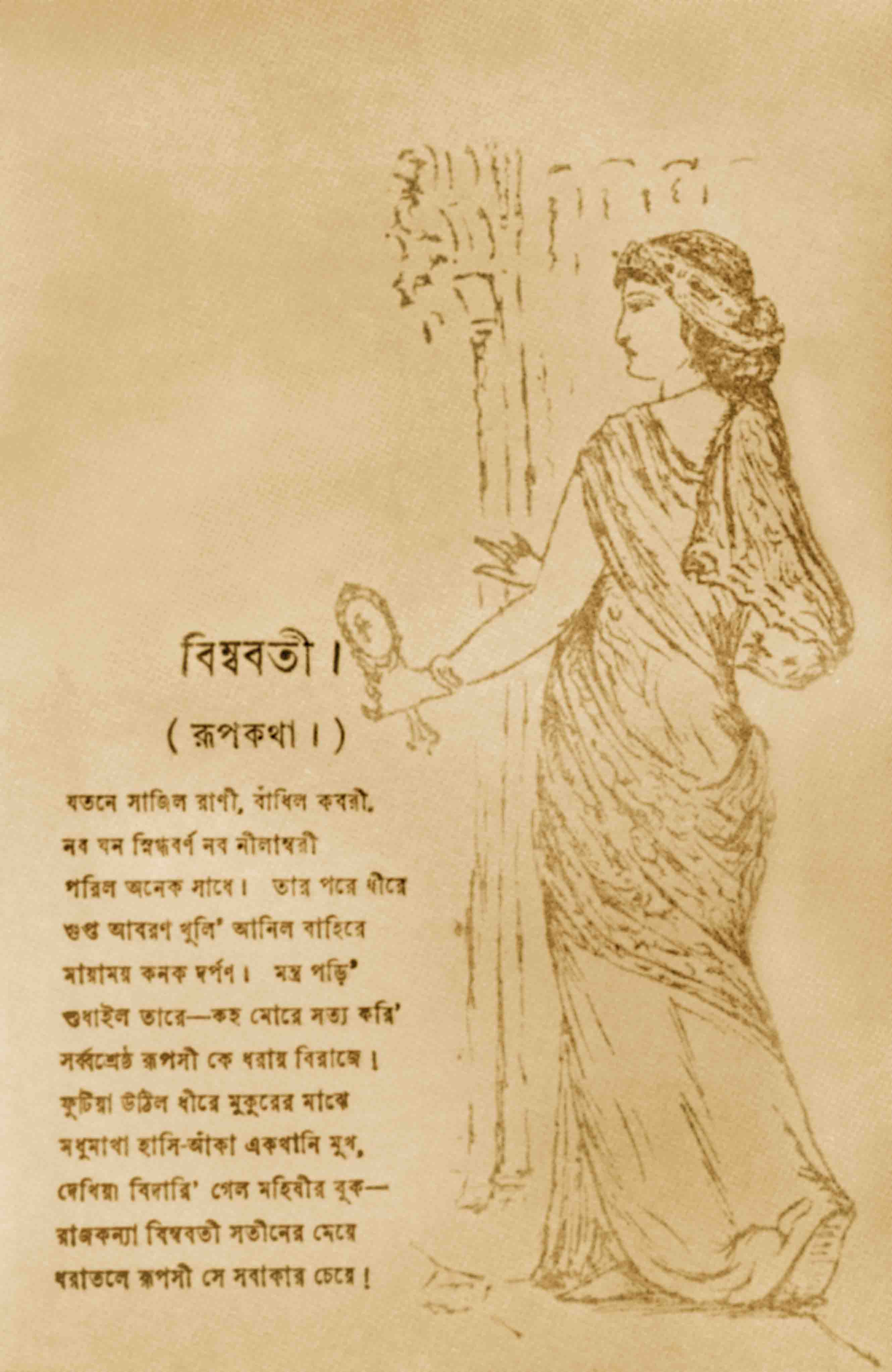
Marks the start of his artistic career as his work is published in Sadhana.
Makes pen and ink illustrations for uncle Dwijendranath’s poem Svapnaprayana, and for Rabindranath Tagore’s poem Bimbavati, and verse drama Chitrangada. These illustrations, using chiaroscuro and crosshatchings, are an early indication of his skill, which he later diversifies across mediums
Receives as gifts an illuminated copy of Irish Melody and an album of paintings of the Lucknow school. The delicate use of line in the former, and the rich colours of the latter, have an impact on his work.
1897
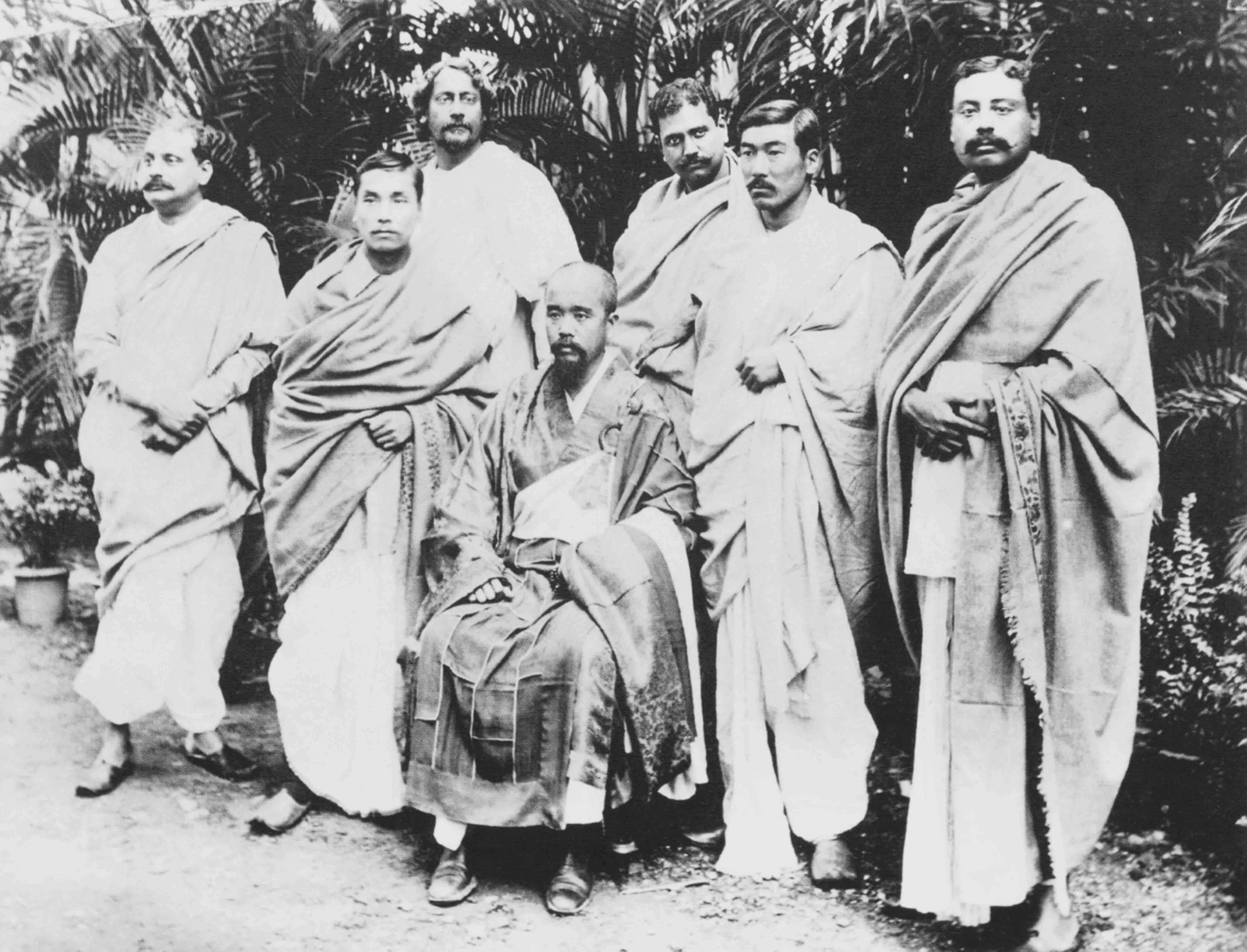
At twenty-five years of age, he studies under Italian artist Olinto
Ghilardi (then vice-principal of the Calcutta Art School) taking weekly lessons on cast-drawing, foliage drawing, pastel and life study, for six months. Soon, he also begins to practice under Charles Palmer for three-four years and develops an expertise in oil portraits.
Late 1980s
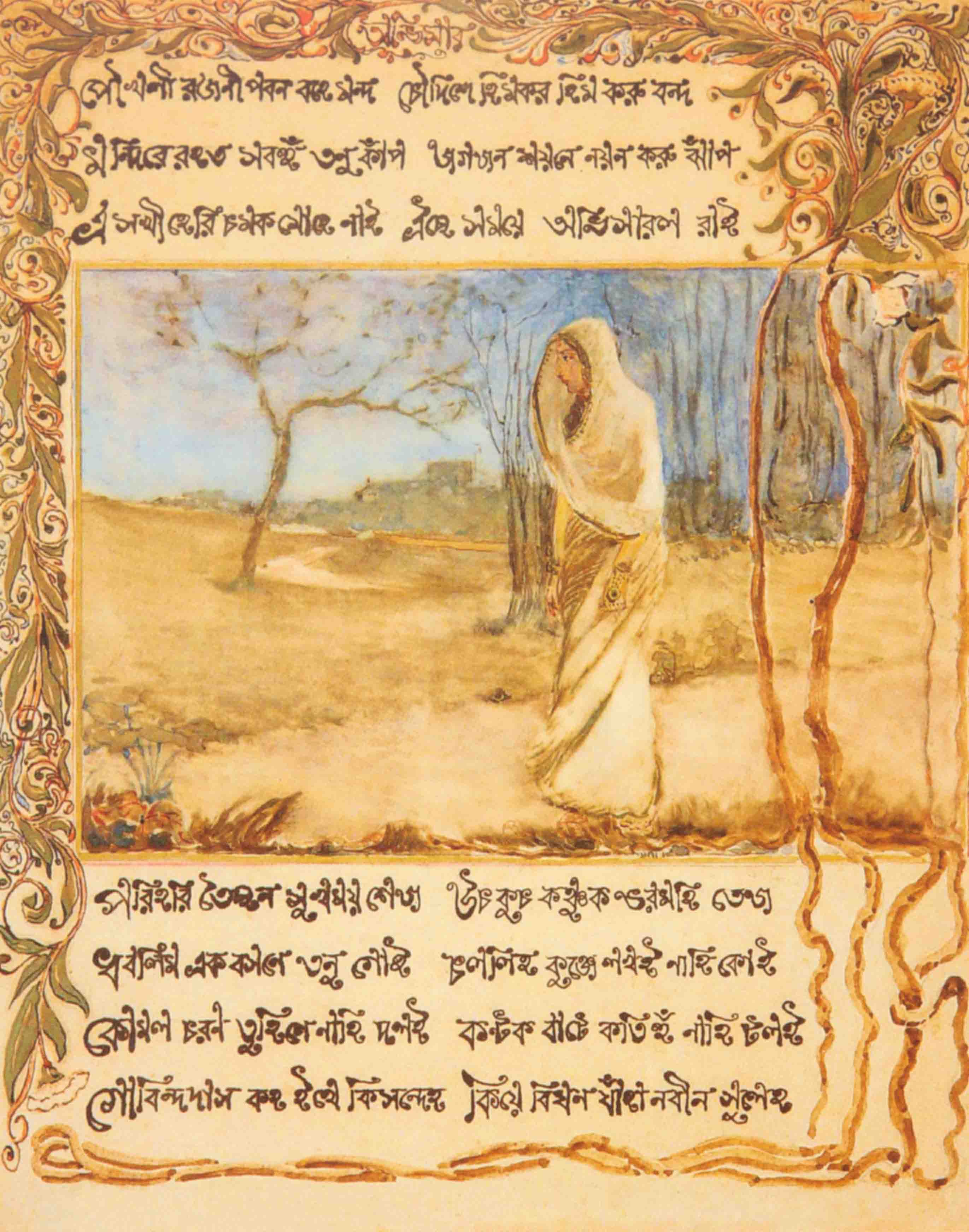
Trains in the European academic style at the Govt School of Art, Calcutta. Around the same time, joins St. Xavier’s College to study English; enjoys scientific lectures by Father Lafont.
1895
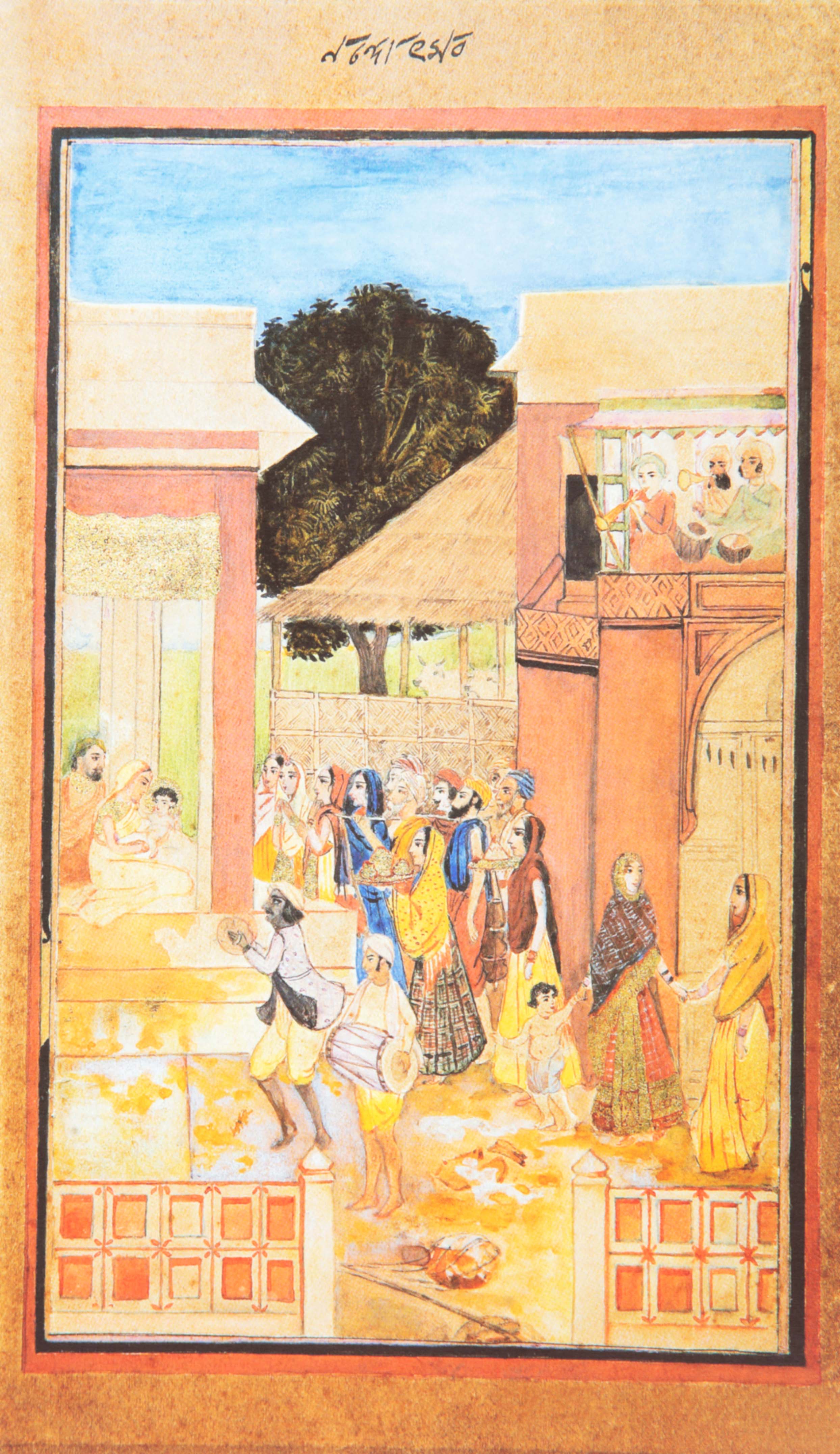
Rabindranath Tagore encourages him to study medieval Bengali
Vaishnava literature which helps develop his poetic imagination. He soon paints Abhisar, showing Radha in search of Krishna.
1895-1902
Paints his Krishna Lila works and distances himself from the European realist style. The Krishna Lila series (1896-97) is made up of a set of twenty paintings, watercolours on paper in the miniature format, dealing with the life of Krishna and the gopis. The paintings showcase an originality of style that harks back to compositions of the Indo-Persian miniatures, but also a narrative style influenced by Bengali Vaishnava literature. E. B. Havell encourages Tagore to further develop his style. Forming a synergetic partnership, they both work together towards the revival of Indian traditional motifs and art.
1900
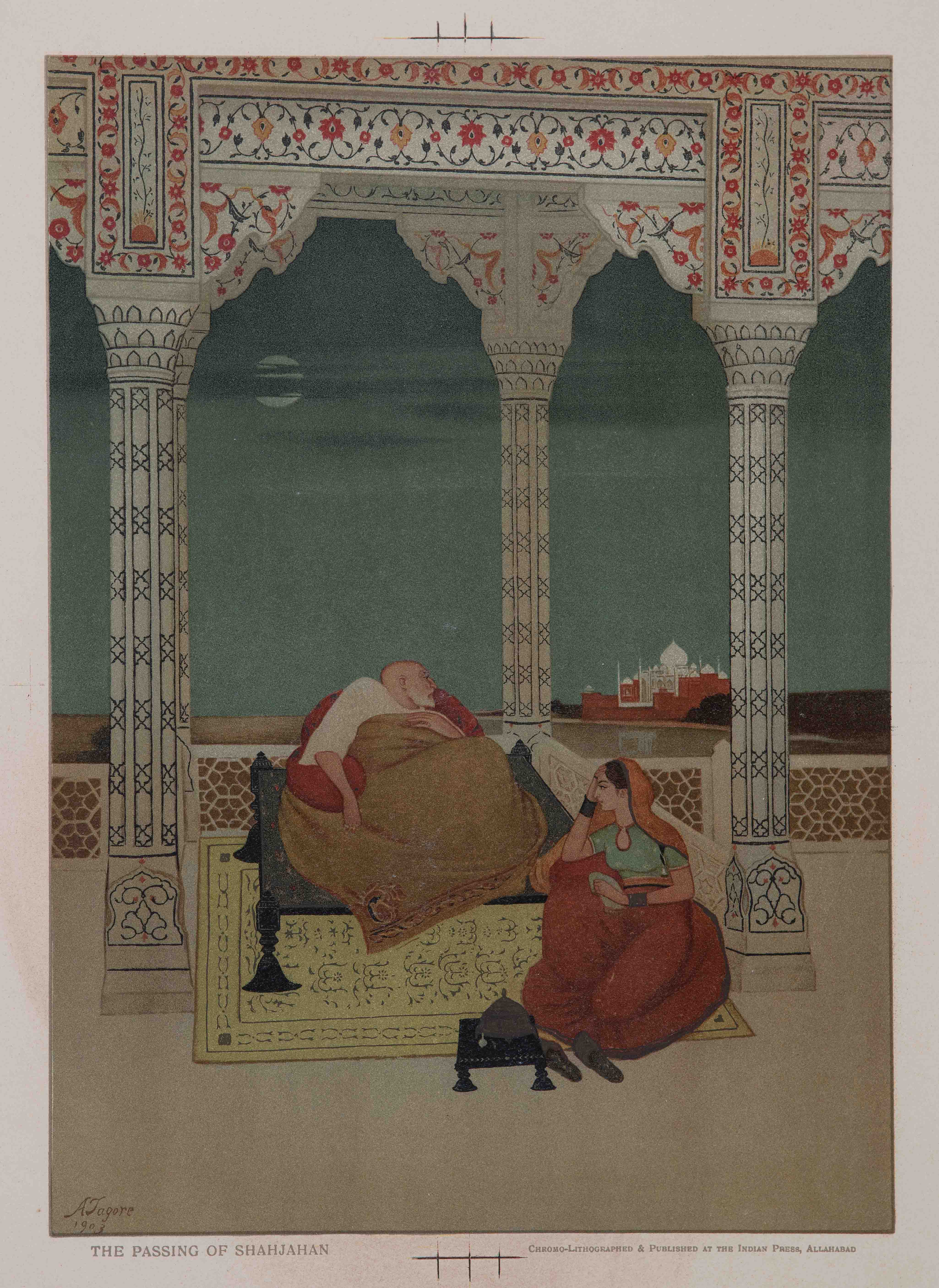
His works are exhibited at the Government College of Art Exhibition in Calcutta.
Visits Monghyr, experiments with watercolour landscapes, and gives up oil painting for the new medium. Returns to practice his art in watercolour under guidance from Palmer, and revisits Monghyr to paint from life and nature.
Bengal and Japan come together in a wave of Pan-Asianism; learns morotai—Japanese brushwork—under Okakura’s pupils Yokoyama Taikan and Shunsho Hishida, internalising Okakura’s ideals of ‘nature, tradition and creativity’. Paints Passing of Shah Jahan soon after the loss of his daughter.
1904
Part of a travelling exhibition organised by the Indian School of Oriental Art for the American Federation of Art, U.S.A.
1905-15
Works as teacher at Government School of Art for a decade.
1905

The year of the first partition of Bengal. Paints his iconic Bharat Mata inspired by the movement against the partition of Bengal. It is seen as a response to the British colonial administration’s condescension towards Indian literature and culture.
1905-09
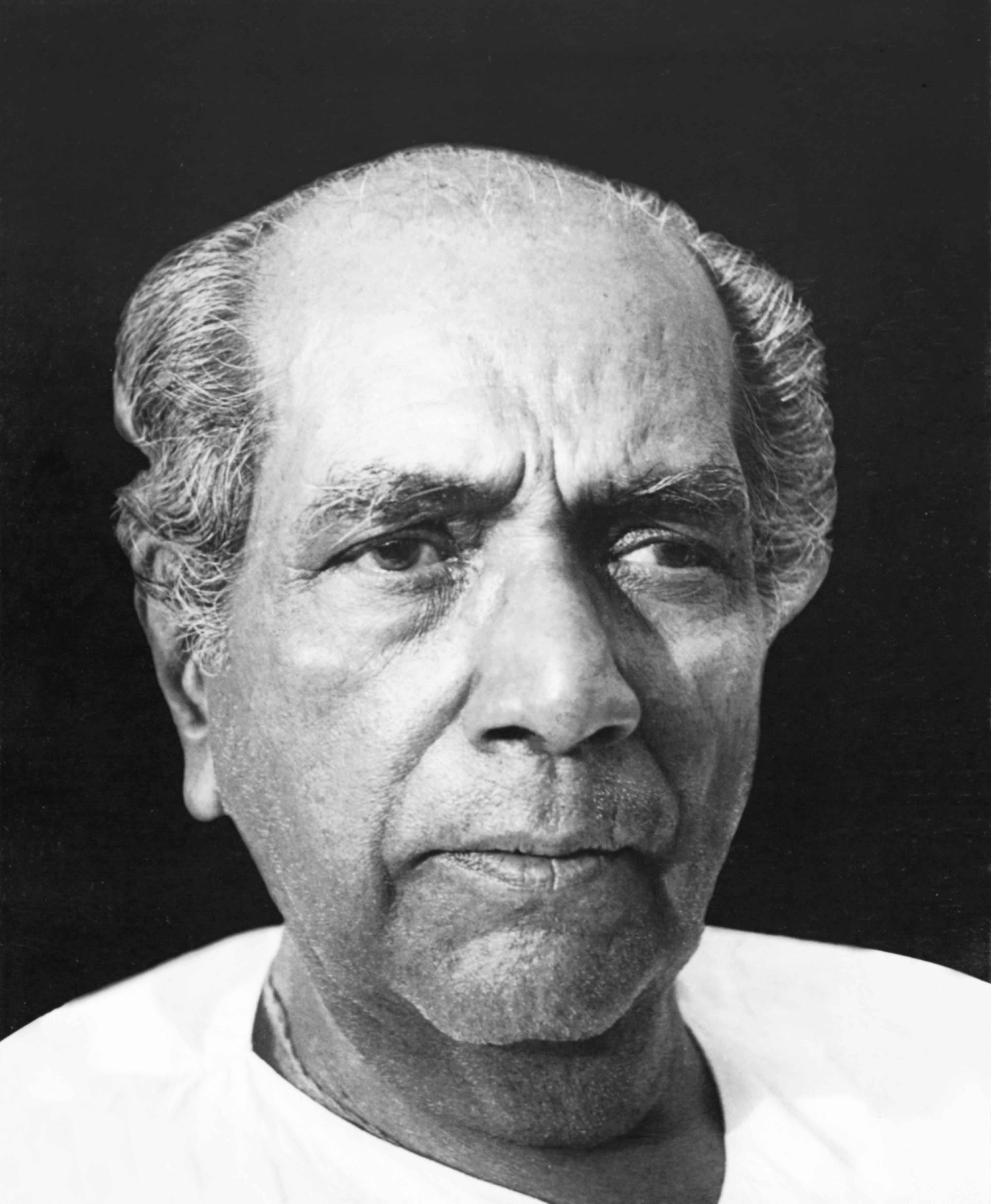
Paints the Omar Khayyam series combining elements from Mughal and Pahari miniatures.
Nandalal Bose, K. Venkatappa, Samarendranath Gupta, Asit Kumar Haldar, Kshitindranath Majumdar, and Saradachandra Ukil are his disciples.
1907
Establishes the Indian School of Oriental Art with English ‘Orientalists’, which organises some notable exhibitions and also functions as the research wing for the Bengal Revivalist Movement. Abanindranath and Gaganendranath teach here informally to a mixed audience of Indians and Englishmen. Artists including Chintamoni Kar, Meera Mukherjee, Prankrishna Paul, and Nirode Mazumdar, are schooled at the Society.
1908
Exhibits works at the Indian School of Oriental Art.
1911
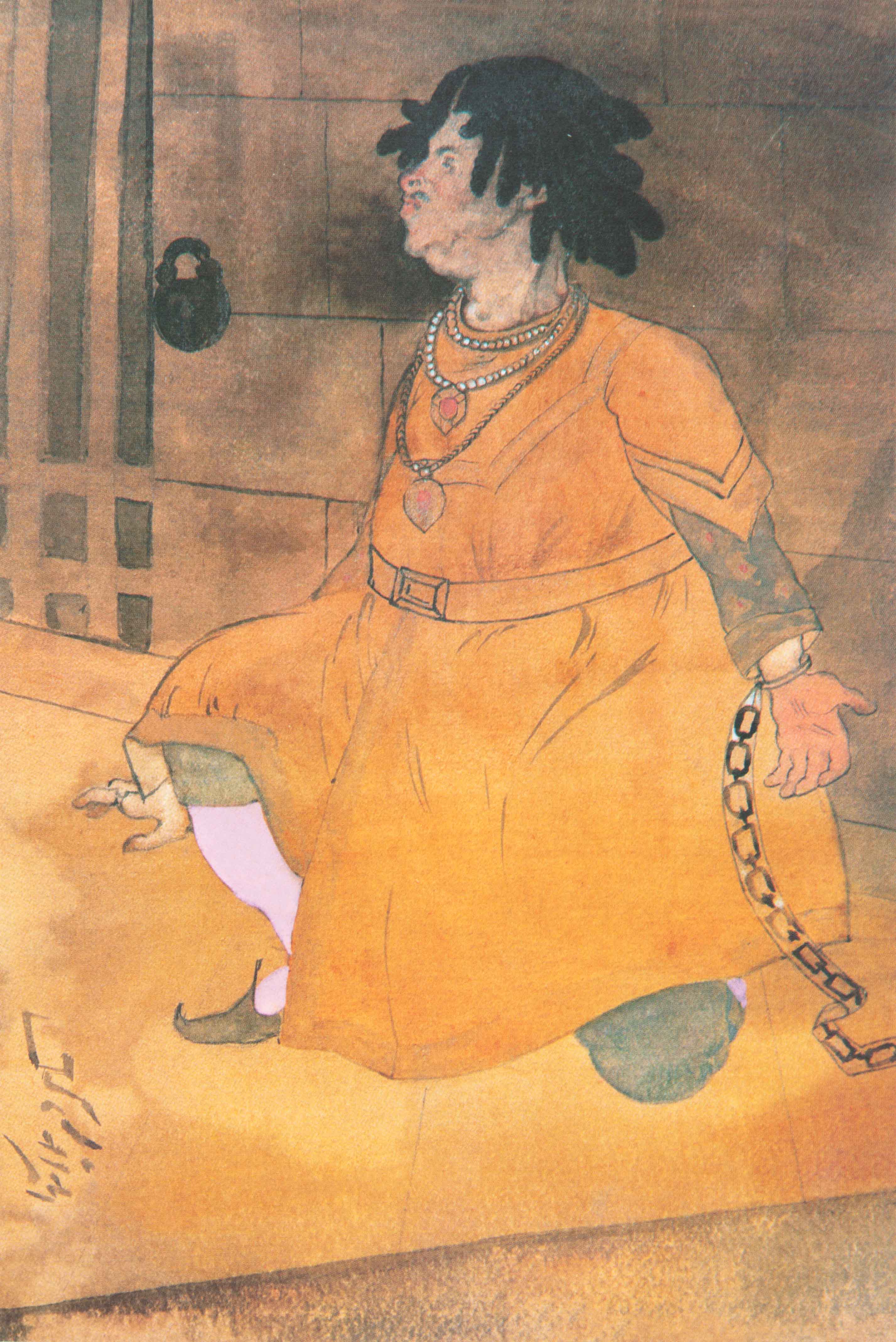
Visits Puri and Konark—an important trip that lends his works higher plastic reality, and encourages an interest in real life subjects.
1914
Exhibits at the 22nd exhibition of the Society Des Peintures Orientalistes Français, Grand Palais, Paris; the exhibition also travels to Belgium, the Netherlands, and the Imperial Institute, England.
1915
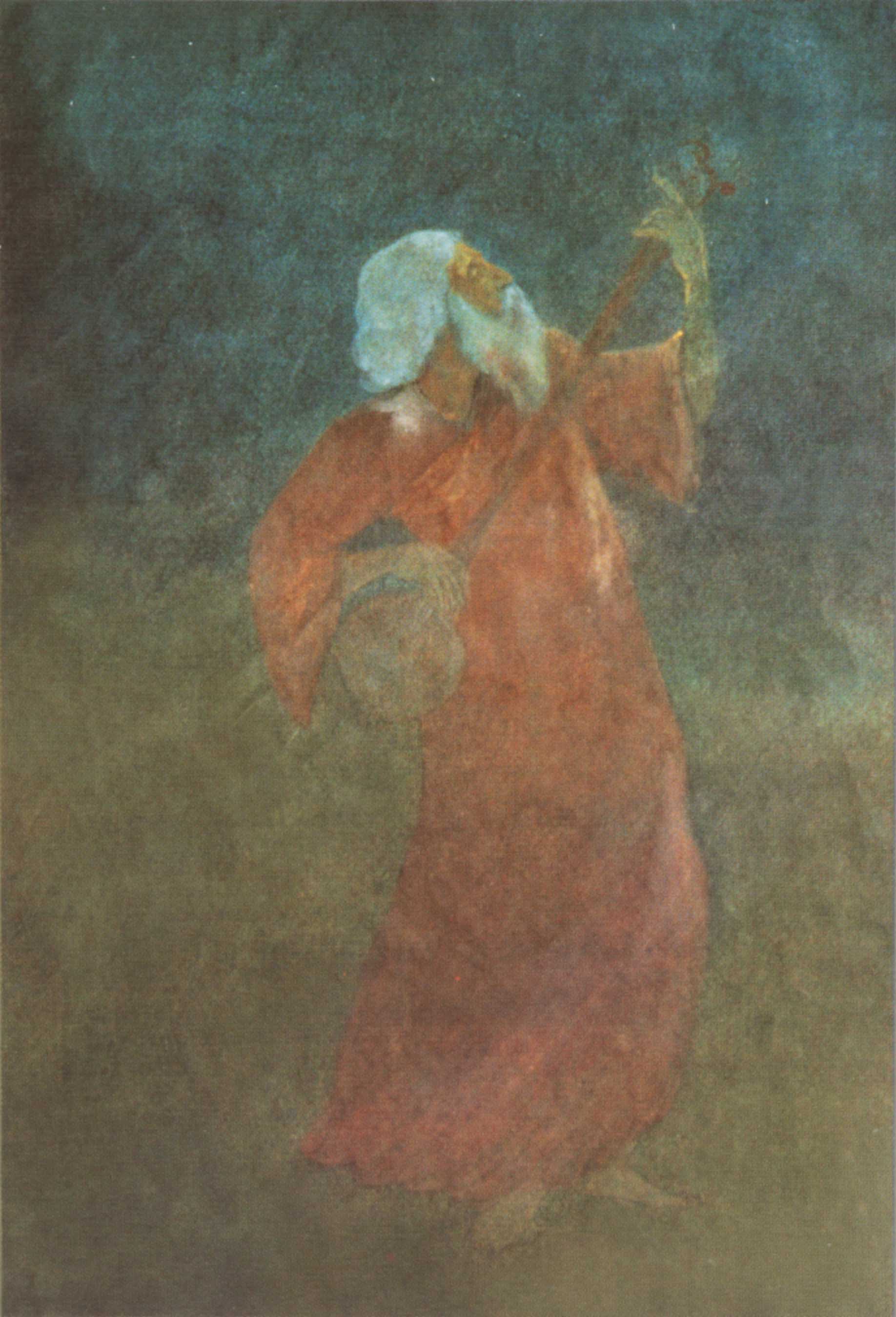
Bichitra Club—founded by the Tagore family—Abanindranath, his two elder brothers, Gaganendranath and Samarendranath, and their uncle, Rabindranath—becomes active.
Bhutpatrir Dese (Land of Goblins and Ghosts), a book of children’s stories, is written and illustrated by Abanindranath.
1916
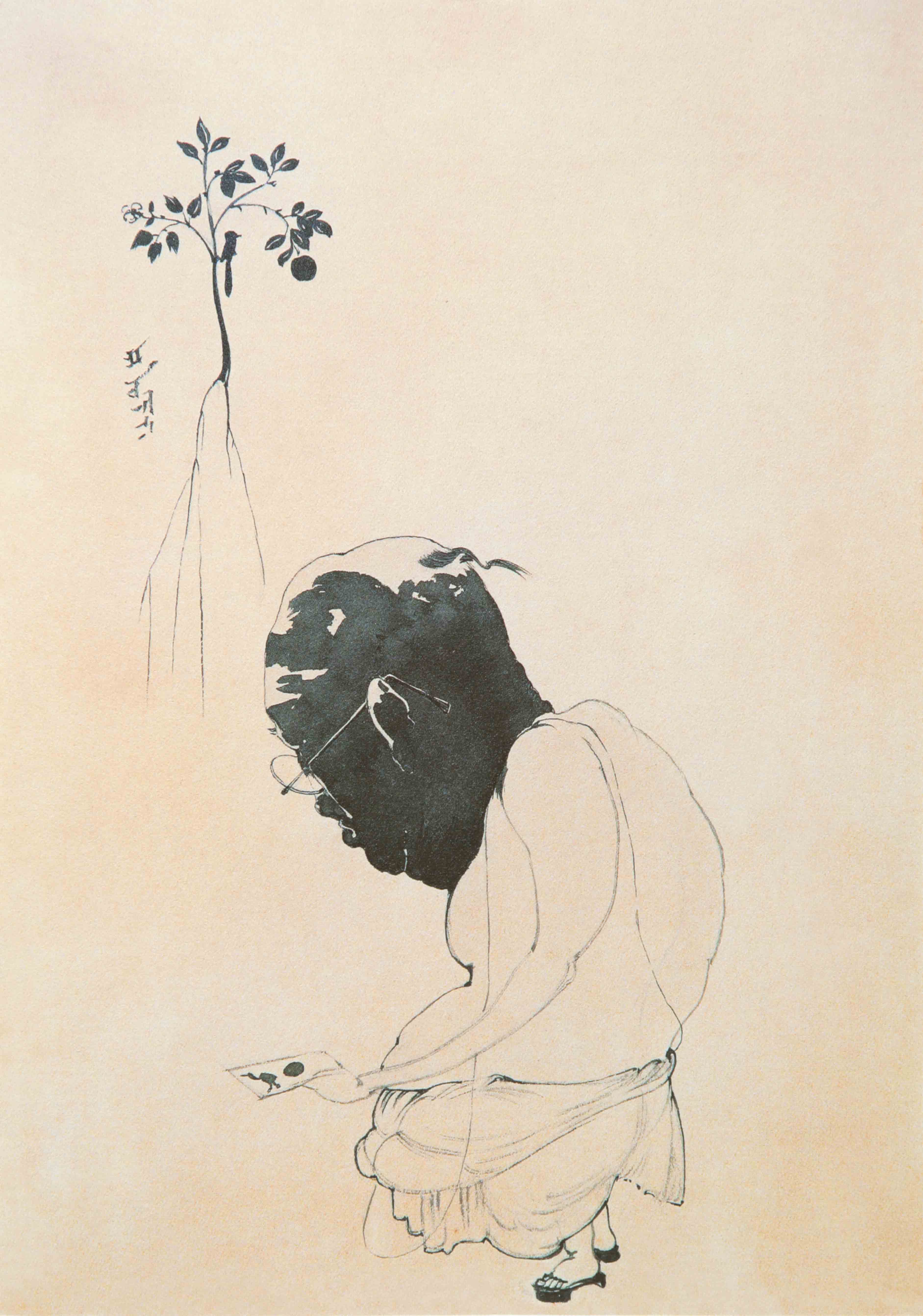
Khajanchir Khata (Accountants Journal) is written and illustrated by Abanindranath.
1919
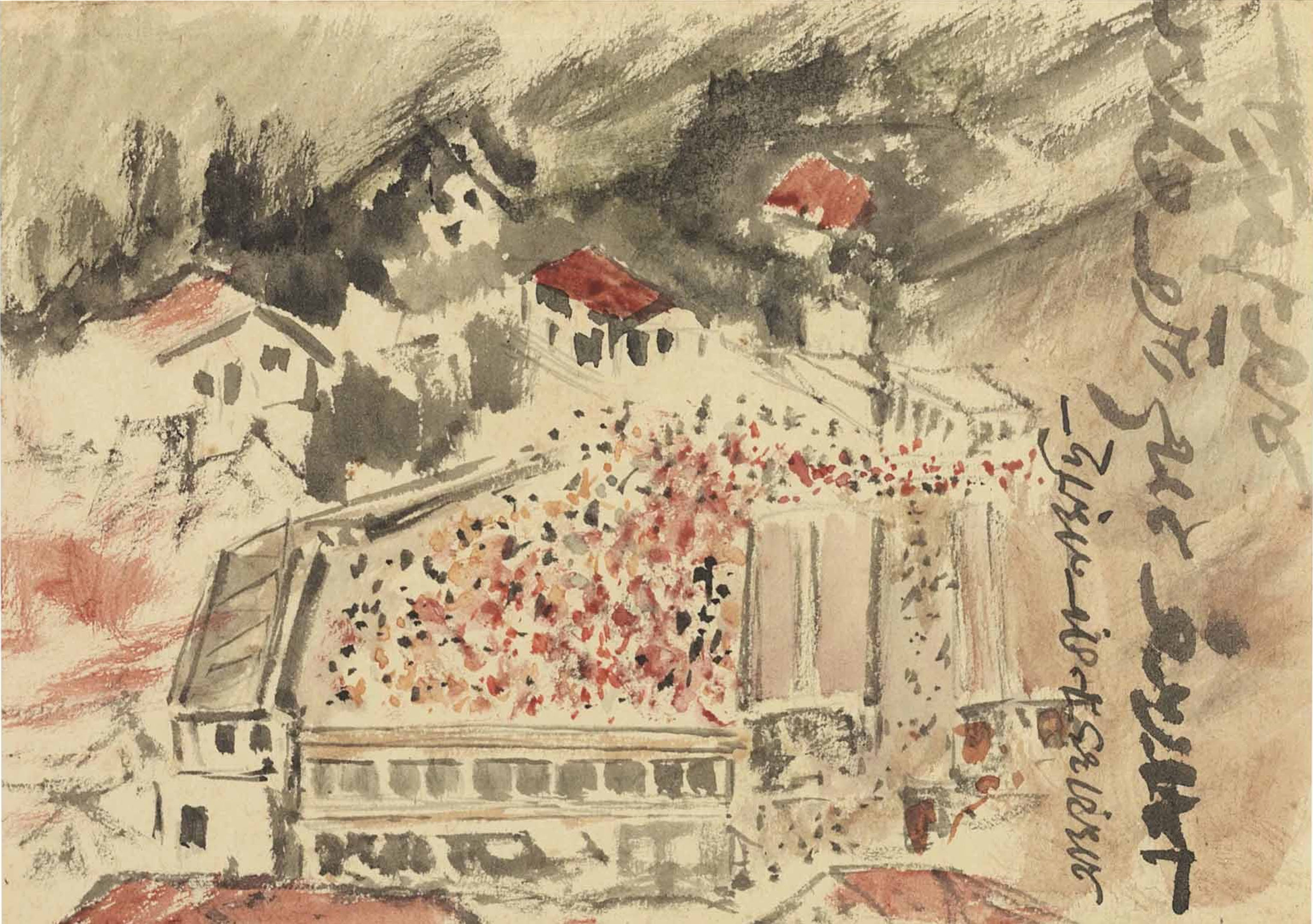
Abanindranath and Gaganendranath Tagore produce the art journal Rupam edited by O. C. Gangooly. He writes scholarly monographs and articles on folk rites in Bengal and women’s art, a notable compilation is his Banglar Brata (Folk Ritual Rhymes of Bengal).
Rabindranath Tagore introduces the teaching of art in the new department—Kala Bhavana—at his university in Santiniketan.
1919-20
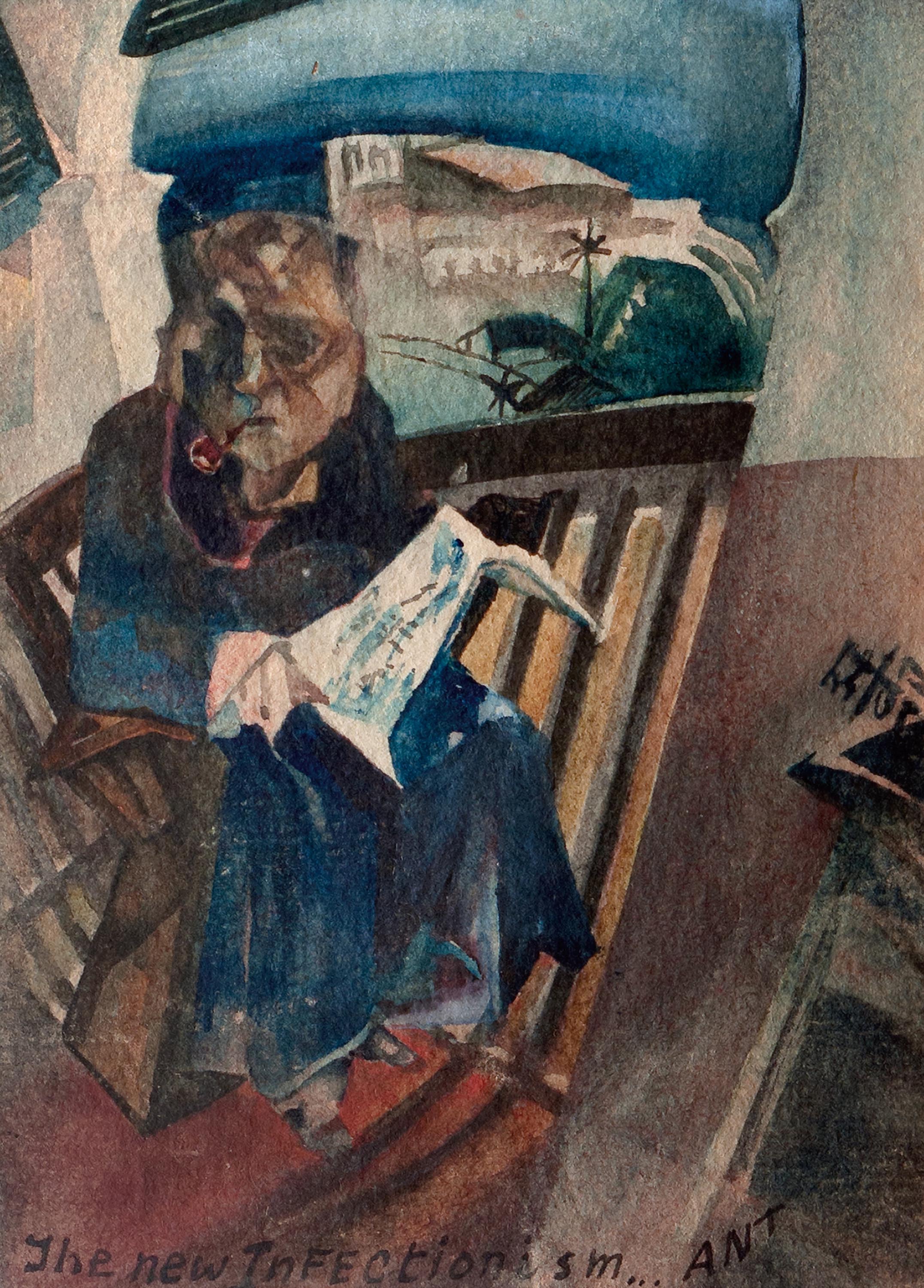
Travels to Darjeeling, paints a series of landscapes inspired by the region.
1920-27
Paints landscapes, varying in mood and nuances, recollecting his visits to Puri, Konark, Monghyr, and Darjeeling, in mediums ranging
from watercolours to pastels. Also paints a number of portraits in different styles and mediums
1922
The Society of Oriental Arts, Calcutta, holds an exhibition of the Bauhaus School of Design and Architecture alongside those of Bengal artists.
Begins to distance himself from the Bengal School even as it has emerged as the national language of art and gained international recognition, as pointed out by Partha Mitter.
1925
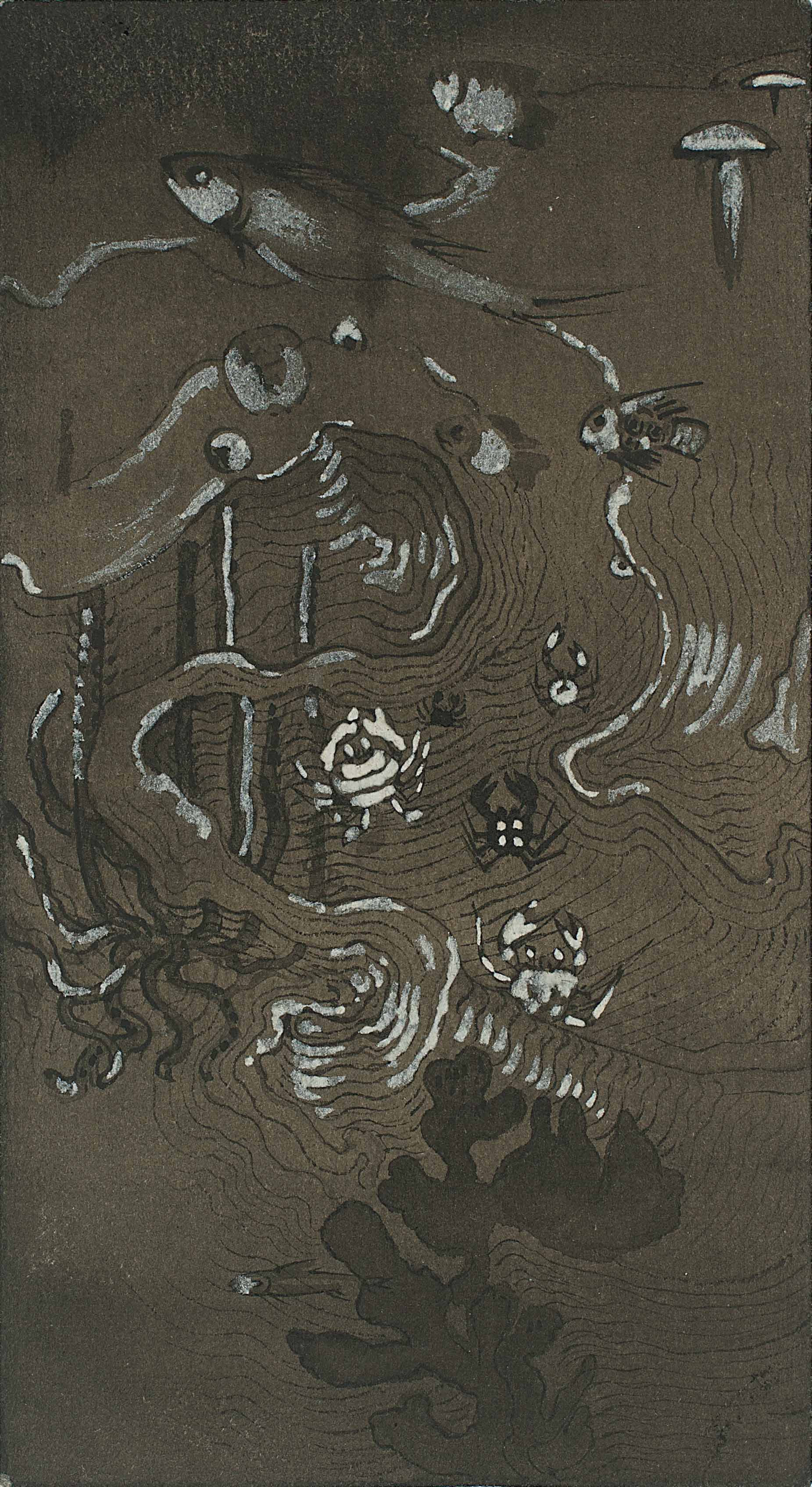
Paints a mixed range of subjects including animals, birds, portraits; his paintings with superscriptions from Bengali literature reveal his literary bias, while his literature is filled with visual imagery. Over time, both his art and writing betray a preference for form over subject, contrary to his elitist background and early education in the arts.
1928
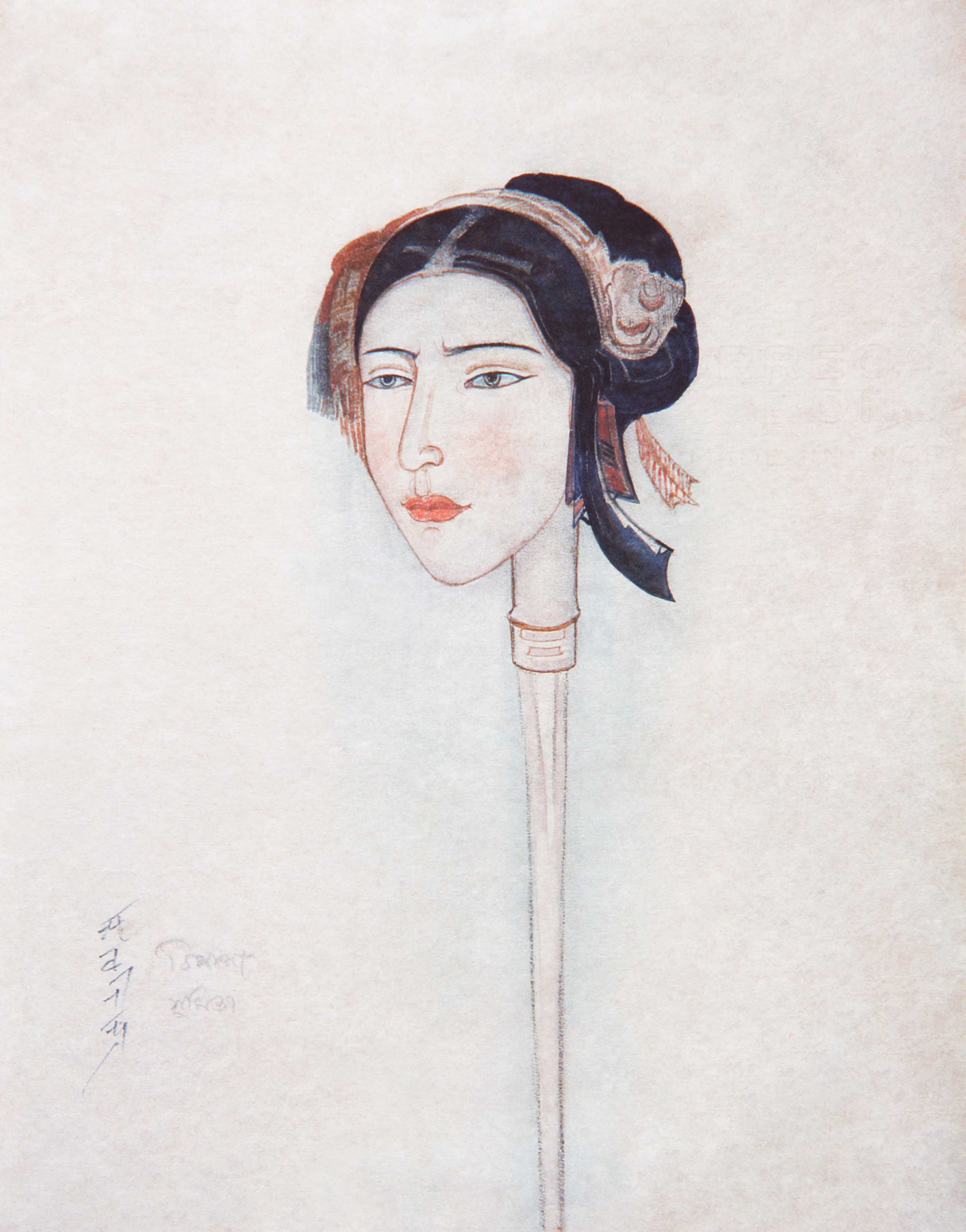
Displays works at the Athene Gallery in Geneva, Switzerland.
1929
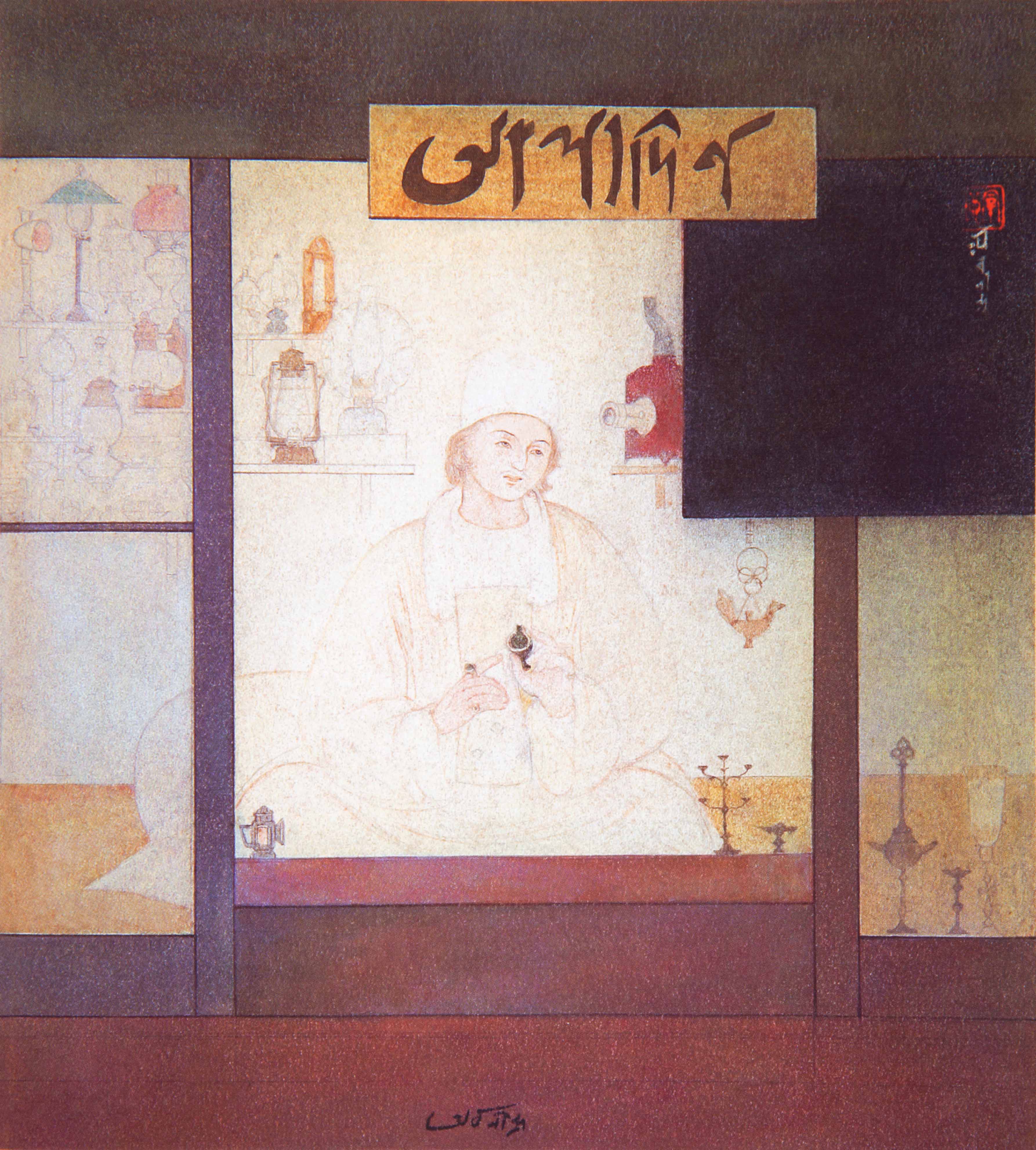
Paints his Mask series—character portraits of Bengali theatre actors—dramatic, humorous, with an abundance of detail.
1928-30
Paints his well-known Arabian Night series, a visual representation of his own interpretation of the tales, transported to his immediate
cultural milieu of Jorasanko. The series receives critical acclaim for his plastic conception and technical genius.
1930-38
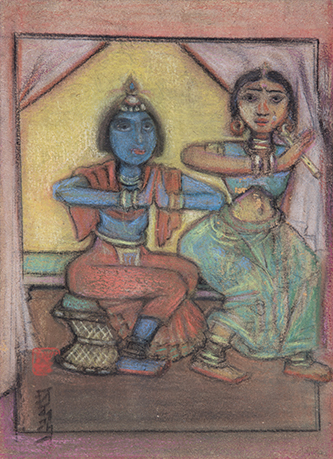
Does not paint for eight years. Incidentally, 1930 is the year that Gaganendranath finds himself incapacitated and unable to paint after an attack of palsy, while their uncle, Rabindranath Tagore, adds painting to his many talents.
1938

Paints, as his final experiment with style, the Anandmangal and Krishnamangal series. The figures are heavily contoured with a thick line. While the forms seem simplified, they are placed in dynamic environments.
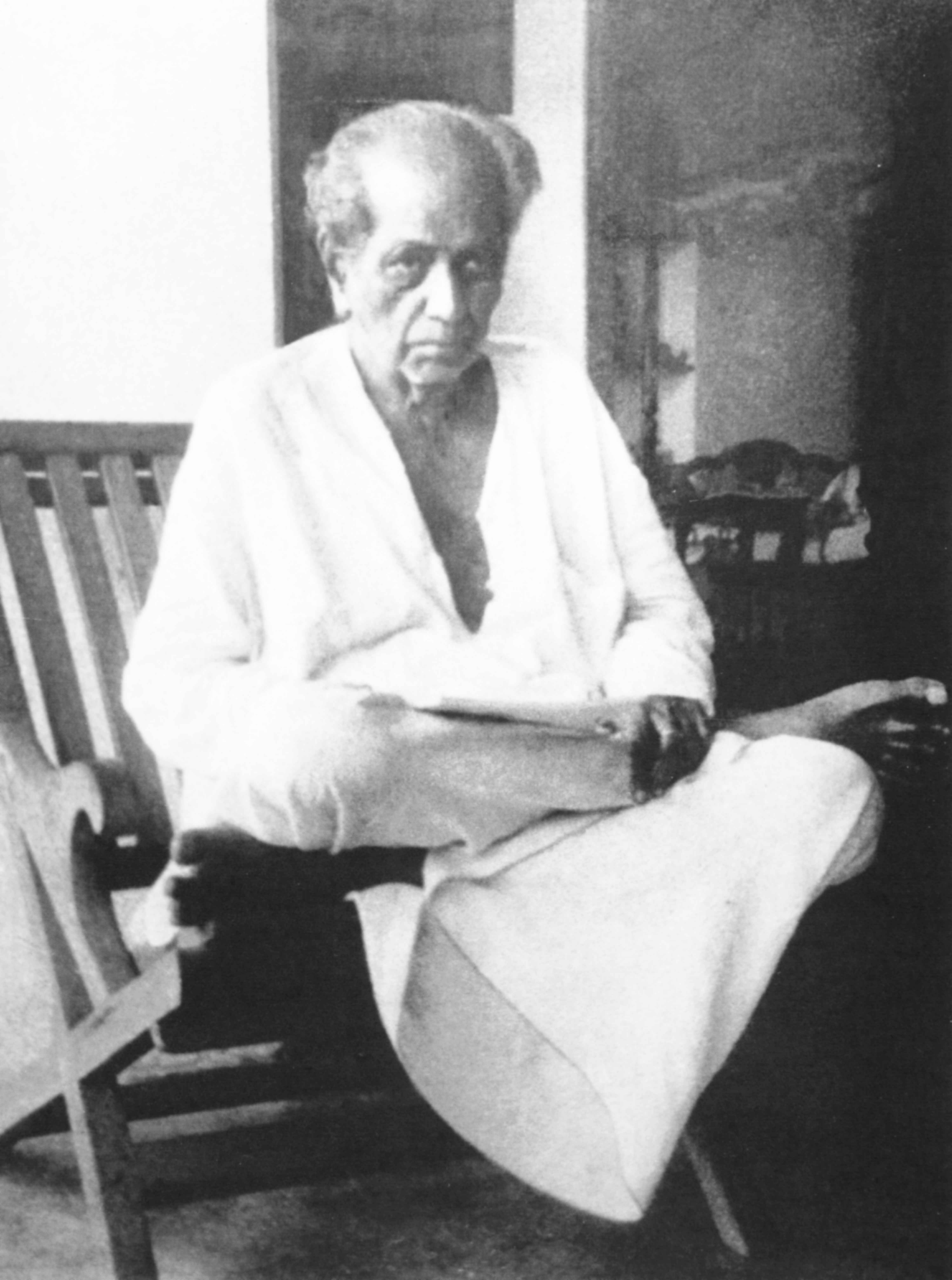
Also, paints the Kabikankan Chandi series, which, again, sees his earlier superscriptions brought in from traditional Bengali sources.
The paintings are simple yet bold and spontaneous and show an intermingling of multiple styles and influences.
1940-42
Paints Poet’s Funeral and then stops painting, taking on the creation of little toy-like or assemblage sculptures with found objects, calling them ‘kutum katam’. Is appointed vice-chancellor, Visva-Bharati, Santiniketan.
1951
Dies in Calcutta at age eighty. He will be declared one on the nine National Treasure artists of India in the 1970s.
